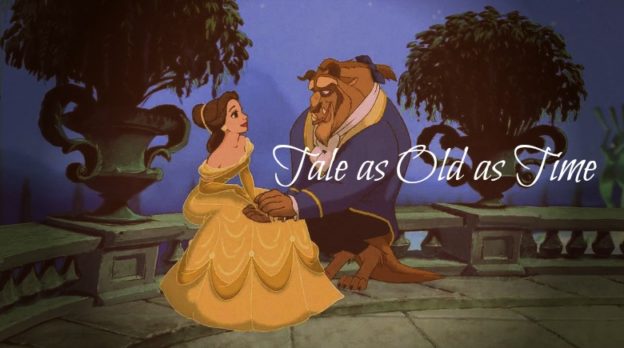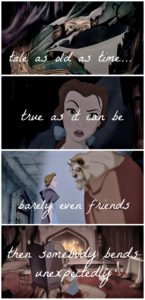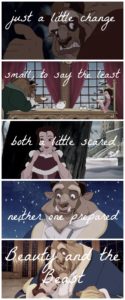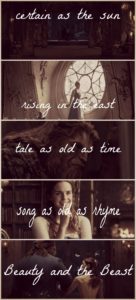Ask me what my favorite Disney movie is, and I’ll tell you it’s Beauty and the Beast. Because it’s simply the best. “Beauty and the Beast,” “Belle,” and “Be Our Guest” are among my favorite Disney songs. Belle is my third-favorite Disney Princess after Aurora and Mira Nova, and Belle set the Disney trend for strong female heroines. Plus her golden ball gown is gorgeous. The movie has some of the most quotable lines (“You should learn to control your temper” and “if it’s not Baroque, don’t fix it”) . There’s a million little things I like about Beauty and the Beast.
The recent live-action remake I think could have been handled differently, but it has some fun nuances to it. One of my biggest takeaways from the remake, even before I got around to seeing it, was the need to ask myself a question: why is ‘Beauty and the Beast’ a popular fairy tale and what is it about it that appeals to us, particularly the Disney version? In discussing this topic, I will wax very personal and, at times, spiritual.
An Extraordinary Story
David Delbar, one of my BYU friends, once told me in passing that he liked to collect and compare different versions of ‘Beauty and the Beast’. I asked him if he would share a few thoughts on the subject:
Pinning down a fairy tale’s appeal is no easy task, but one aspect of the story that has universal application is the union with the Other. Our version, which was transmitted through Leprince de Beaumont, was originally written for school girls, and it is possible that the tale was meant to prepare young women for their eventual marriage, a frightening event where the strange bridegroom no doubt seemed an unruly beast. Its modern appeal to men might be the contemporary story’s focus on awakening manhood, where the transition between boy to man is mediated through the angst and anger-filled teenage years. In either case, the idea of love mediated by magic, the hope to love and to be loved in return, is a basic human desire. That Belle and the Beast overcome insurmountable obstacles to obtain this precious relationship no doubt gives us a vicarious hope that we can do likewise.
That about summarizes it, but let me put it in my own words, in 2000 words or more.
The original fairy tale is a fable on the theme that kindness, goodness, and love are superior virtues to beauty and vanity. There are hundreds, thousands of other folktales the world over with similar messages, warning those who hear or read them to not be deceived by outward appearances. And it’s a theme that plays out a lot in real life, because what you see on the surface of something or someone can be vastly different from what is inside.
‘Beauty and the Beast’ stands out because we have a heroine who simply likes books and wants to save her father, and a beast who lives in a castle filled with odd delights. Retelling ‘Beauty and the Beast’ is, for some, a chance to explore magic and worldbuilding—what kind of creature is the beast? Who are his servants? How were they enchanted? How is the maiden entertained in the castle? It also touches on the most tender, most desirable of human relationships, that of romantic love. Love is the theme of the archetypal test that the heroine faces: she can have whatever she wants if she lives in this palace with a hideous beast, and if she falls in love with him he will turn into a prince, and she will have achieved an ideal standard of living. It is a fantasy in every sense of the word that plays on human desire (material comforts and romantic love with an attractive partner) but at the same time makes us question what we would do to get them—or even if they’re important.
Retellings of ‘Beauty and the Beast’ can sometimes explore other themes as well. My mom’s absolute favorite book is Beauty by Robin McKinley, which is about a heroine who has to come to terms with her own self-worth while she stays in the castle. I, however, took a better liking to the weirdly amazing Rose Daughter by the same author, where Beauty gets on her hands and knees to save the Beast’s rose garden.

Hypable
My friend, the author Jenni James, has written two novel versions of ‘Beauty and the Beast’, one for her Faerie Tales series which she is in the process of adapting for a film, and Beauty is the Beast. She shares the following:
The most intriguing part about Beauty and the Beast is the growth and the ability to not just hope for love, but believe in it, feel it, and learn from it. I think we can all learn from the hard lessons the beast goes through. There are many times when we close ourselves off from the world, only to find it much more kind and forgiving than we imagined. My whole goal as an author is to leave the reader happier and with more hope than when they first picked up the book. It’s stories like Beauty and the Beast, that truly help bring magic to others and are the easiest and most fun to write.
The Disney Masterpiece
Disney’s Beauty and the Beast came out right before I was born. I grew up watching it on VHS. It was entertaining when I was a small child, but when I got into high school I fell in love with it because I absolutely related to it.

Giphy
I was just like Belle when I was in high school—well, maybe I wasn’t quite as assertive. But I was a girl who loved books and had big dreams stuck in a “provincial town” for school. I had barely been diagnosed with Autism. I didn’t have any close friends. I didn’t really fit in. (A couple of online personality quizzes I’ve taken recently suggest that I am still Belle in BOTH Disney versions!).
As I got a little older, wiser, and sadder, I started trying to teach myself to be social and to reach out to people around me. But it was difficult, and the results were not immediate. I assumed that because it was difficult for me to socialize that there was something wrong with me. I assumed because I had different interests from other people, because I didn’t know how to socialize normally, because of other obstacles in my personal life that made me feel terrible about myself, that I was a monster. In fact, I was accused at one point of being too arrogant to accept the friendship of those around me because I was too good for everyone else. And that wasn’t a complete falsehood.

Tumblr
Not a human. Not a person. Not a part of the crowd.
In other words,
I was the Beast.
I did work to improve my social skills, and those efforts paid off, but there wasn’t really a clean-cut ending to my fairy tale, even though for a long time I pretended that there was. Because, ten years later, I’m still asking myself if I really learned the lessons that I needed to, and if I’m really “normal” after everything I went through. In other words, have I really left the Beast—the dark side of my inadequacy—behind me?
I do know what changed though. I changed into a person who wanted to be able to love and respect others and to carry out friendships with people who were different from me. I learned that I was capable of becoming a better person. And I guess if you want to look at it in a better light, I am the Beast in the sense that I am learning to be more “human.”
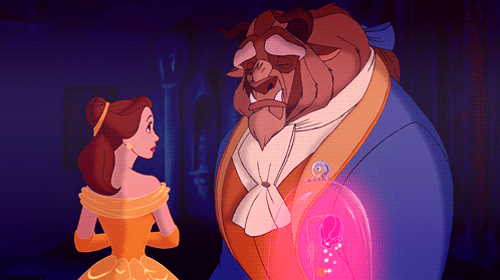
Rebloggy
I guess it doesn’t hurt to think of myself as both Beauty AND the Beast. In a way, the story kind of ties back to that conflict of feelings within each of us—light versus dark, peace versus anger. The Disney version is unique because Belle and the Beast both have to deal with their stubborn sides. They put aside their issues to show respect to each other. And then they connect because they realize they are both, in their own ways, different.
Lessons from a Legend
There are two major themes in ‘Beauty and the Beast’ that I want to talk about. The first one is true love. There are many different kinds of love, but the truest, deepest love that one person can have for another person is the selfless kind, the kind that In the LDS Church we call Charity (see 1 Corinthians 13 and Moroni 7: 45-48). True love is loving someone without regard for their appearance or their flaws, and being willing to do whatever it takes to make that other person happy. It is a kind of love that can exist in any relationship.
Now, let me be clear: the moral of ‘Beauty and the Beast’ is to not fall in love romantically with an undesirable person on purpose. People who are disadvantaged need to be lifted up. You don’t need to marry them or make them your best friend. But you do need to be kind and treat everyone with respect. And if someone you love needs help, let them know that you love them.
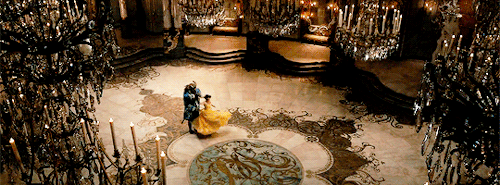
Fanpop
And loving someone doesn’t mean that you approve of everything they do or you ignore the things they do wrong. You can invite them to change, and if they don’t you still love them. That’s the kind of love that Charity is.
The song “Beauty and the Beast” is about the miracle of finding romantic love. But it is also about the more important love that lies underneath, the change of heart that comes with getting to know another person and accepting them for who they are. Relationships and friendships of every kind change us, some of them tremendously. And that process of developing love of any kind for another person has a strange beauty all its own. Learning to love, especially learning to love again after that feeling has been lost, is a miraculous, sometimes painful process. Acceptance in spite of the obstacles of human pride and frailty includes, but is not limited to, acceptance of oneself.
Secondly, there is the theme of transformation, or more importantly redemption. No one is perfect, but there are some people who feel like their faults make them not as good as everyone else. What makes us imperfect can, in fact, make some people feel like monsters, and society often describes vice as being monstrous. People who sense their weakness want to change, to become better. Trying to change yourself can be difficult. We put in the effort, and it can seem like it isn’t working. But then suddenly doing things differently becomes easy. Our outlook is different. The burden is easier to carry. The force that creates this change is ultimately a power beyond our own. We do not control the change, we simply choose to allow it.
‘Beauty and the Beast’ hints at the Christian awareness of human nature, the fact that our flaws make us “bestial” in the sight of God. Repentance and self-correction pave the way for Grace and forgiveness, affects that are very real but can be described as a supernatural and miraculous change that comes because of Love, especially Divine Love. And with becoming a different person, ironically, we discover our “true“ self. The change of heart and understanding is captured so beautifully by this story. It is through the actions of love—kindness to strangers, compassion to friends, the everyday patience between husband and wife, sacrifice and generosity, the mediation of Christ—that we do the things that change our nature. ‘Beauty and the Beast’ is evidence of the truth in the statement, “Fairy Tales are more than true, not because they tell us dragons exist, but because they tell us that dragons can be beaten.” People who love this story see it as evidence of this truth, even if they don’t understand it. You don’t have to be a beast. You CAN overcome.
The wonders of an enchanted castle are nothing in comparison to the real miracles that the story is about: coming to understand someone else, and having a change of heart. Wrongs can be righted, scars can be healed, opposition and pain can be removed. You think that change isn’t possible, and then suddenly you see the difference. It’s the reason I’m drawn to redemption stories, like that of Darth Vader/Anakin Skywalker, or The Winter Soldier/Bucky Barnes, but by now I’ve given you an earful about both of them in my other posts. Simply put, ‘Beauty and the Beast’ is a metaphor for redemption. It is a story that encourages us to believe in the impossible, especially when it comes to seeing the good in others.
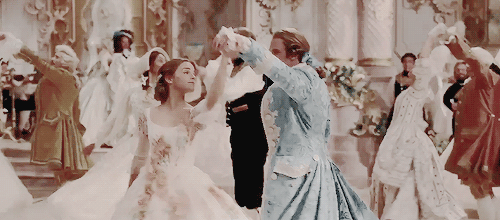
Tumblr
In the Beauty and the Beast reboot, Mrs. Potts sings the following at the finale that I think describes what I am trying to share with you.
“Winter turns to spring
Famine turns to feast
Nature points the way
Nothing more to say
Beauty and the Beast”
Beauty and the Beast is a story about overcoming. It’s about the human hope for things that we think are impossible: acceptance in the face of opposition, love in spite of hate, and monstrosity being overcome by the beauty of goodness.

